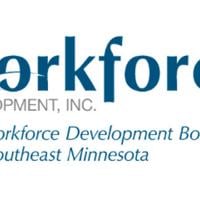Bridges to Healthcare program gets $1.5 million boost in state funding
Bridges to Healthcare program gets $1.5 million boost in state funding KIMT 3


Workforce Development, Inc. Receives $1.5 Million in State Funding for Bridges to Healthcare Program

Introduction
Workforce Development, Inc. has recently announced that it has received $1.5 million in state funding for its Bridges to Healthcare program. This program aims to support individuals in overcoming obstacles and achieving their career and educational goals in the healthcare sector.
Expansion Plans
The non-profit organization plans to utilize the funding to support existing activities in Olmsted, Freeborn, Mower, and Steele counties. Additionally, they aim to expand their efforts into Rice County and potentially into Goodhue and Winona Counties, following the successful model implemented in Rochester since 2013.
Bridges to Healthcare Program
The Bridges to Healthcare program offers various resources to students, including career counselors, scholarships, tutors, and bus passes. These resources are designed to assist students in overcoming barriers and ultimately contribute to the creation of a skilled healthcare workforce.
Public/Private Partnerships
Workforce Development has established strong partnerships with Adult Basic Education Centers in Rochester, Austin, Albert Lea, Owatonna, Faribault, and Red Wing, as well as South Central College, Minnesota State College Southeast, Northfield Hospital, and Mayo Clinic. These collaborations have laid the foundation for the expansion of the Bridges to Healthcare program in Southeast Minnesota, including the involvement of other long-term care employers in the area.
Program Collaboration
The partners have worked together on program design, implementation, expansion, and financial/navigational support. Their collective efforts aim to recruit, prepare, and support a diverse group of well-trained, certified, and compassionate students, facilitating their transition into employment with healthcare providers in Southeast Minnesota.
SDGs, Targets, and Indicators
-
SDG 3: Good Health and Well-being
- Target 3.8: Achieve universal health coverage, including financial risk protection, access to quality essential healthcare services, and access to safe, effective, quality, and affordable essential medicines and vaccines for all.
- Indicator 3.8.1: Coverage of essential health services (defined as the average coverage of essential services based on tracer interventions that include reproductive, maternal, newborn and child health, infectious diseases, non-communicable diseases, and service capacity and access).
-
SDG 4: Quality Education
- Target 4.4: By 2030, substantially increase the number of youth and adults who have relevant skills, including technical and vocational skills, for employment, decent jobs, and entrepreneurship.
- Indicator 4.4.1: Proportion of youth and adults with information and communications technology (ICT) skills, by type of skill.
-
SDG 8: Decent Work and Economic Growth
- Target 8.6: By 2020, substantially reduce the proportion of youth not in employment, education or training.
- Indicator 8.6.1: Proportion of youth (aged 15-24 years) not in education, employment, or training.
Table: SDGs, Targets, and Indicators
| SDGs | Targets | Indicators |
|---|---|---|
| SDG 3: Good Health and Well-being | Target 3.8: Achieve universal health coverage, including financial risk protection, access to quality essential healthcare services, and access to safe, effective, quality, and affordable essential medicines and vaccines for all. | Indicator 3.8.1: Coverage of essential health services (defined as the average coverage of essential services based on tracer interventions that include reproductive, maternal, newborn and child health, infectious diseases, non-communicable diseases, and service capacity and access). |
| SDG 4: Quality Education | Target 4.4: By 2030, substantially increase the number of youth and adults who have relevant skills, including technical and vocational skills, for employment, decent jobs, and entrepreneurship. | Indicator 4.4.1: Proportion of youth and adults with information and communications technology (ICT) skills, by type of skill. |
| SDG 8: Decent Work and Economic Growth | Target 8.6: By 2020, substantially reduce the proportion of youth not in employment, education or training. | Indicator 8.6.1: Proportion of youth (aged 15-24 years) not in education, employment, or training. |
Analysis
1. Which SDGs are addressed or connected to the issues highlighted in the article?
The article addresses or connects to the following SDGs:
- SDG 3: Good Health and Well-being
- SDG 4: Quality Education
- SDG 8: Decent Work and Economic Growth
2. What specific targets under those SDGs can be identified based on the article’s content?
Based on the article’s content, the specific targets under the identified SDGs are:
- Target 3.8: Achieve universal health coverage, including financial risk protection, access to quality essential healthcare services, and access to safe, effective, quality, and affordable essential medicines and vaccines for all.
- Target 4.4: By 2030, substantially increase the number of youth and adults who have relevant skills, including technical and vocational skills, for employment, decent jobs, and entrepreneurship.
- Target 8.6: By 2020, substantially reduce the proportion of youth not in employment, education or training.
3. Are there any indicators mentioned or implied in the article that can be used to measure progress towards the identified targets?
The article mentions or implies the following indicators that can be used to measure progress towards the identified targets:
- Indicator 3.8.1: Coverage of essential health services (defined as the average coverage of essential services based on tracer interventions that include reproductive, maternal, newborn and child health, infectious diseases, non-communicable diseases, and service capacity and access).
- Indicator 4.4.1: Proportion of youth and adults with information and communications technology (ICT) skills, by type of skill.
- Indicator 8.6.1: Proportion of youth (aged 15-24 years) not in education, employment, or training.
Behold! This splendid article springs forth from the wellspring of knowledge, shaped by a wondrous proprietary AI technology that delved into a vast ocean of data, illuminating the path towards the Sustainable Development Goals. Remember that all rights are reserved by SDG Investors LLC, empowering us to champion progress together.
Source: kimt.com

Join us, as fellow seekers of change, on a transformative journey at https://sdgtalks.ai/welcome, where you can become a member and actively contribute to shaping a brighter future.







